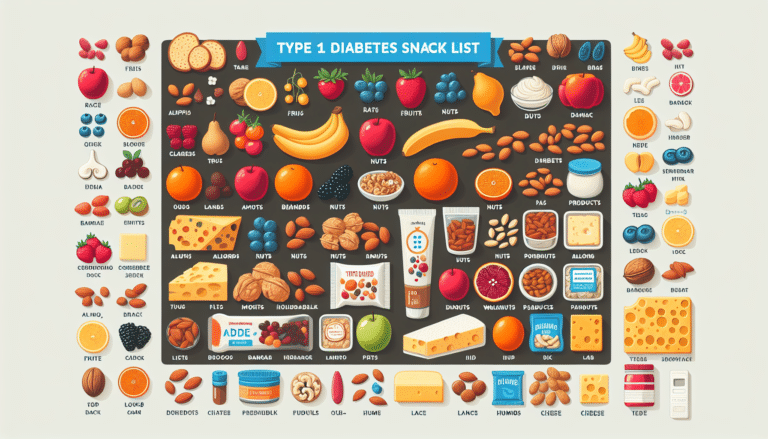Paleo Diet for Diabetics – Blood Sugar Management
Paleo Diet for Diabetics
Dieting as a diabetic is very important as food consumed has a direct linked effect on blood glucose levels. Paleo and Keto diet programs are among the best ways to manage blood sugar in diabetics. Some foods are known to either raise or decrease blood glucose levels in a rate unmatched by others. And as a result of this cause-effect scenario, an integral aspect of diabetes management and control is being aware of:
- What you eat
- How much you eat
- Preparation
- The eating plan you have in place that matches your schedule and lifestyle
All these factors should be taken into cognizance as a means of regulating and controlling blood sugar levels. Note that, the target range is a moderate level of blood glucose that is neither too high nor too low to present any side effect or health condition whatsoever.
The focus in today’s article is the Paleo Diet for diabetics and core analysis will revolve around:
- What paleo diet is?
- How paleo diet works?
- Paleo diet and its effect on diabetes
- The research so far on Paleo diet
- Benefits and side effects of Paleo diet to diabetics
What is The Paleo Diet?
Paleo diet is used to refer to the set and category of food “Paleolithic Humans” consumed depending on what was available to be gathered at the time and where they lived thus, referred to as the “cave man diet” which emphasizes the need for consumption of unprocessed animal, plant based, whole foods whilst shunning processed foods, dairy, sugars & grains.
The modern modifications to the Paleolithic diet stresses the need to eliminate unprocessed foods from ones eating plan. This results in a diet characterized by the consumption of relatively high mono/poly unsaturated healthy fats. Moderate animal protein and very low levels of carb intake as well.
The strict paleo diet excludes the consumption of legumes (including lentils, beans etc). Grains (including wheat, rye, barley, bread and pasta etc). Hydrogenated or partly hydrogenated vegetable oils such as soybean, sunflower, corn, cotton seed, grape seed oil etc. Dairy products and sugars (including candy, ice cream etc).
How The Paleo Diet Works
The Paleo Diet consists of foods that are generally low in carbohydrate content (Source). This leads to improved control of body Glycemic index. The diets focus is not on limiting the amount of calories consumed but its primary objective, the nutritional value of the foods eaten.
The fundamentals of the Paleo Diet in relation to diabetes management include;
Low Carbohydrates Intake:
The diets principle revolve around limiting carbohydrate and keeping its intake at very minimal levels. This can present immeasurable health benefits to diabetics as it leads to lowering levels of blood sugar as carbs have the most impact on blood glucose.
High Intake of Healthy Fats:
It should be noted that this does not refer to the consumption of harmful trans or saturated fats but the intake of healthy mono and poly unsaturated fats that aid in reducing organ inflammation, promoting cardiovascular health and has direct linkage to ketosis: a metabolic state in which the body produces ketone bodies out of fat and utilizes these ketones as an alternative energy source instead of carbohydrate.
Paleo Diet and its Effect on Diabetes, Blood Sugar and Insulin Levels
Due to the Paleolithic diets, food composition comprising mostly of low carbohydrate intake and healthy fat consumption, it leads to visible improvements in insulin sensitivity, glycemic index control, reduction in weight/waist and hip circumference and thus, automatically eliminating some of the predisposing risk factors of diabetes.
Research
A study by jönsson was the first to assess the potential benefits and effects the Paleolithic diet had on individuals diagnosed with type 2 diabetes. The study evaluated 13 subjects each with type 2 diabetes and placed on the diet for a period of 3 months each. At the end of the study, results indicated that the Paleolithic diet caused statistically significant lower mean values of blood pressure, body mass index, weight and hip circumference, triglycerides levels with decrease in fasting plasma glucose. The improvements were as a result of the diet promoting the consumption of whole unprocessed plant based foods with lesser bulk composition equating to the “full feel” on fewer calorie intake and thus, encouraging weight loss which is of benefit to individuals with type 2 diabetes.
Another study published in 2015 showed that people with type 2 diabetes who followed the Paleolithic diet were able to;
- reduce cholesterol levels.
- lower blood pressure.
- stabilize blood sugar levels etc.
Although there are no scientifically confirmed data as to how the Paleo diet effect this health changes, it is believed that it’s increased fiber intake, decreased sugar & processed food intake with more consumption of antioxidants & micronutrient enriched foods had a healthier more positive impact on the guts microflora and in turn increasing their sensitivity to insulin.
Paleo Diet Side Effects on Diabetics
The side effects of Paleo diet is as a result of the exclusion of certain food groups with lowering of carb intake. This exclusion will result in certain side effects which are only temporary as the body adapts to change in eating plan. These include;
Low Carbohydrate Flu:
This include flu like symptoms due to the intake of low level carb a common characteristic of most Paleo diet. In such cases, there is less demand for insulin production from the liver and this decreases insulin secretion and improves insulin effect in minor quantity thus, reducing insulin resistance which is a major force of type 2 diabetes.
Hypoglycemia (Low blood sugar):
It is important to take precautions as a diabetic on insulin medication such as Sulfonylureas and Glinides. This combination with the Paleo diet can lead to extreme hypoglycemia due to the consumption of very low carbs. Be sure to adjust your insulin. Matching up dieting effects and prevent blood sugar from reaching harmful low levels.
Other side effects include;
- Bad Breath
- Lack of energy
- Change in Bowel Habits
- Increased Cravings
Conclusion
The paleo diet no doubt has its benefits and negative side effects regarding the management and treatment of diabetes. However, highly recommended to consult with a registered dietitian or licensed physician in order to closely monitor and examine factors that could render the diet ineffective or trigger certain symptoms.
In the long run, choice of foods, how much of it consumed in terms of caloric value and amount is relative to blood glucose level.
Data and research on paleo diet and its relation to diabetes & weight loss is very minimal and most studies carried out engage only a small number of participants in a short study time frame (8 to 10 weeks or less) and thus, cannot be totally recommended as a sure certified guarantee of improvement to every individual.







